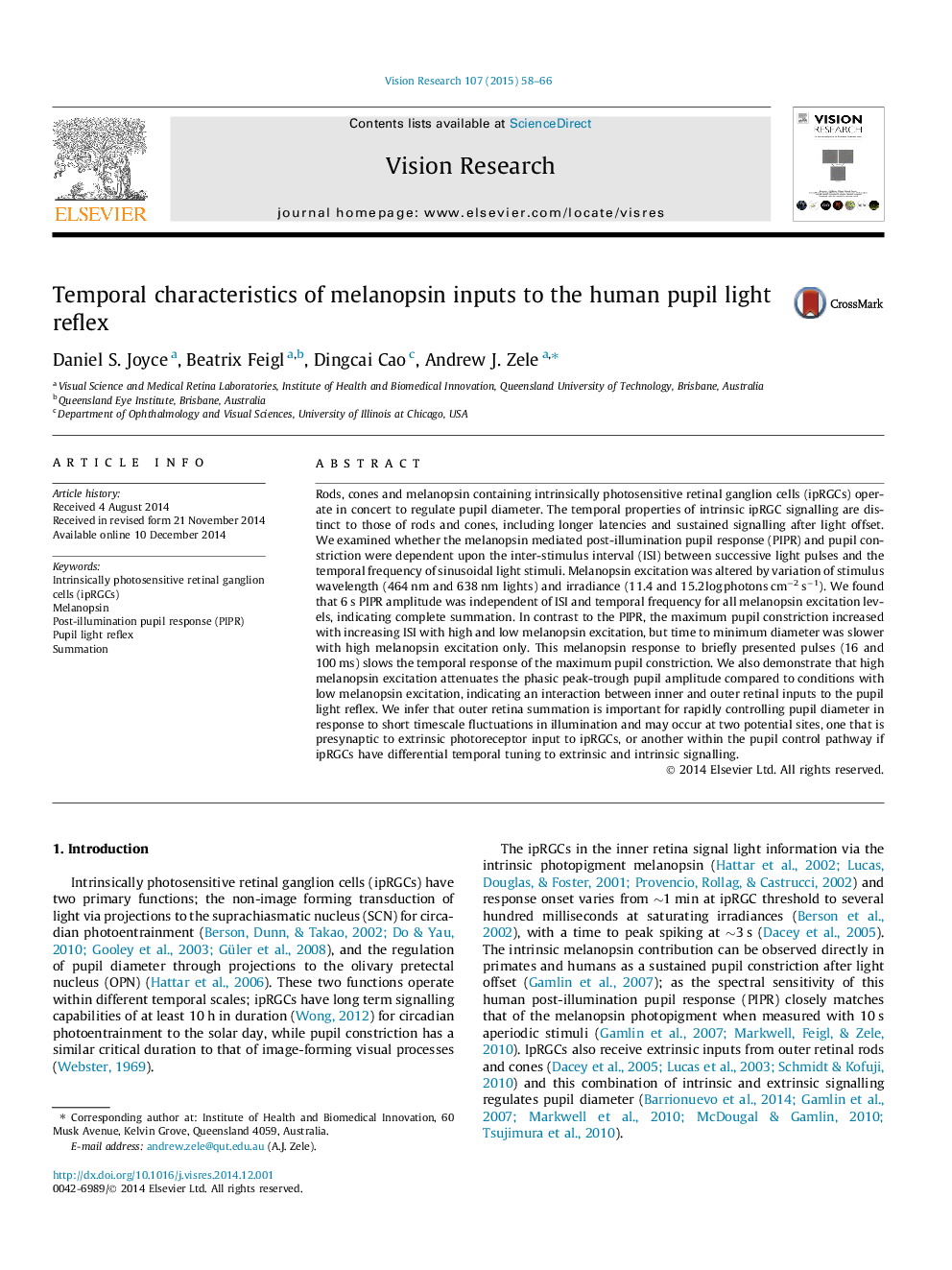| Article ID | Journal | Published Year | Pages | File Type |
|---|---|---|---|---|
| 6203370 | Vision Research | 2015 | 9 Pages |
â¢Post-illumination pupil response amplitude displays complete temporal summation.â¢PIPR amplitude is independent of stimulus temporal frequency.â¢Melanopsin activation attenuates peak-trough amplitudes of the phasic pupil response.
Rods, cones and melanopsin containing intrinsically photosensitive retinal ganglion cells (ipRGCs) operate in concert to regulate pupil diameter. The temporal properties of intrinsic ipRGC signalling are distinct to those of rods and cones, including longer latencies and sustained signalling after light offset. We examined whether the melanopsin mediated post-illumination pupil response (PIPR) and pupil constriction were dependent upon the inter-stimulus interval (ISI) between successive light pulses and the temporal frequency of sinusoidal light stimuli. Melanopsin excitation was altered by variation of stimulus wavelength (464 nm and 638 nm lights) and irradiance (11.4 and 15.2 log photons cmâ2 sâ1). We found that 6 s PIPR amplitude was independent of ISI and temporal frequency for all melanopsin excitation levels, indicating complete summation. In contrast to the PIPR, the maximum pupil constriction increased with increasing ISI with high and low melanopsin excitation, but time to minimum diameter was slower with high melanopsin excitation only. This melanopsin response to briefly presented pulses (16 and 100 ms) slows the temporal response of the maximum pupil constriction. We also demonstrate that high melanopsin excitation attenuates the phasic peak-trough pupil amplitude compared to conditions with low melanopsin excitation, indicating an interaction between inner and outer retinal inputs to the pupil light reflex. We infer that outer retina summation is important for rapidly controlling pupil diameter in response to short timescale fluctuations in illumination and may occur at two potential sites, one that is presynaptic to extrinsic photoreceptor input to ipRGCs, or another within the pupil control pathway if ipRGCs have differential temporal tuning to extrinsic and intrinsic signalling.
